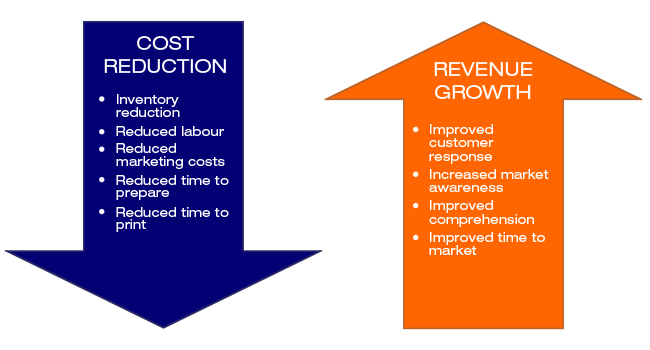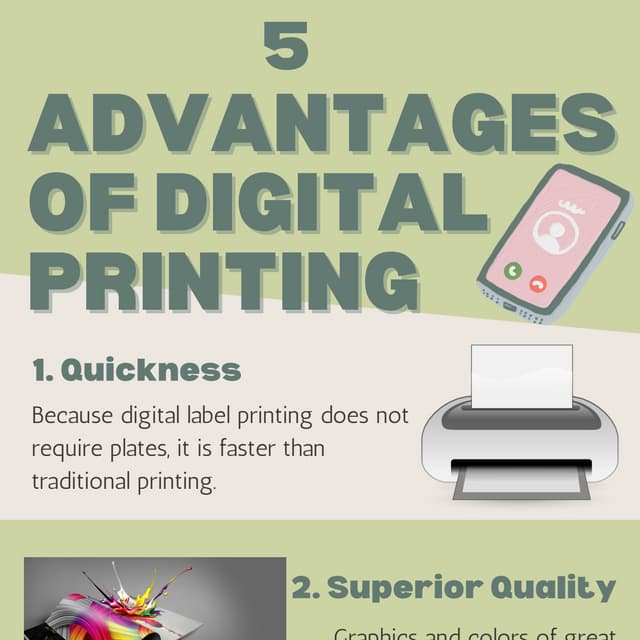About Digital Printing
About Digital Printing
Blog Article
The Greatest Guide To Digital Printing
Table of ContentsThe Basic Principles Of Digital Printing Some Ideas on Digital Printing You Need To KnowDigital Printing Things To Know Before You BuyIndicators on Digital Printing You Should KnowThe Single Strategy To Use For Digital PrintingUnknown Facts About Digital Printing
Variable information printing, such as straight mail with customized codes and addresses, is ideally fit for electronic printing. Digital quick printing only needs 4 steps of style, evaluation, printing and binding to obtain whatever done. Digital fast printing has an exceptional advantage: print on need.According to PMMI, electronic printing permits brands and manufacturers to react swiftly to customer demands while boosting the supply chain, reducing warehousing cost and waste, and enjoying faster time to market. That all audios excellent, yet how does this modern technology do all that? The major differentiator of these modern technologies is that there are no set up fees and no plates with digital printing.
Our Digital Printing Statements
According to Wikipedia, the best distinction between electronic printing and typical methods such as lithography, flexography, gravure, or letterpress - Digital Printing is that there is no requirement to change printing plates in digital printing, whereas in these analog printing methods the plates are repetitively changed. This results in quicker turn-around time and reduces price when making use of electronic printing.
Speedy production indicates getting your product to market much faster. It additionally suggests it's much easier and faster to make adjustments later, when you transform a recipe, include a SKU, or create seasonal product packaging. Digital printing is highly versatile, so it's very easy to make changes to the package layout rapidly. Everything returns to home plates.
Much more stock can mean more waste in the future. With standard printing techniques, short-run printing is simply not possible. Because a wonderful style can make or damage your item, digital printing constantly develops top notch, clear and vivid graphics each time. Digital printing on adaptable pouches adds the bright, vivid, and precise graphics that practically beckon customers to reach out and touch them.
Digital printing is the procedure of printing digital-based photos straight onto a variety of media substratums. There is no need for a printing plate, unlike with offset printing. Digital files such as PDFs or desktop computer posting data can be sent straight to the digital printing press to publish on paper, image paper, canvas, material, synthetics, cardstock and various other substratums.
Getting The Digital Printing To Work
According to PMMI, digital printing enables brand names and manufacturers to respond swiftly to client needs while enhancing the supply chain, minimizing warehousing price and waste, and appreciating faster time to market. That all noises fantastic, but how does this innovation do all that? The significant differentiator of these technologies is that there are no set-up charges and no plates with digital printing.
According to Wikipedia, the best visit this web-site distinction in between electronic printing and standard techniques such as lithography, flexography, gravure, or letterpress is that there is no requirement to change printing plates in electronic printing, whereas in these analog printing approaches home plates are repeatedly replaced. This causes quicker turn-around time and reduces price when making use of electronic printing.

The Single Strategy To Use For Digital Printing
With conventional printing approaches, short-run printing is just not feasible. Due to the fact that a terrific style can make or damage your product, electronic printing constantly creates high-quality, clear and vibrant graphics each time.

According to PMMI, electronic printing enables brands and producers to respond quickly to customer demands while improving the supply chain, lowering warehousing price and waste, and enjoying faster time to market. That all audios terrific, yet just how does this innovation do all that? The major differentiator of these innovations is that there are no set-up fees and no plates with digital printing.
Not known Facts About Digital Printing
According to Wikipedia, the best distinction in between digital printing and conventional approaches such as lithography, flexography, gravure, or letterpress is that there is no requirement to change printing plates in electronic printing, whereas in these analog printing techniques home plates are repeatedly read here changed. This leads to quicker turn-around time and decreases expense when using electronic printing.
Digital printing is highly versatile, so it's very easy to make adjustments to the package layout swiftly. It all goes back to the plates.

The smart Trick of Digital Printing That Nobody is Discussing
Digital printing is the process of printing digital-based images straight onto a range of media substrates. There is no requirement for a printing plate, unlike with countered printing. Digital files such as PDFs or desktop publishing data can be sent straight to the digital printing press to print theoretically, image paper, canvas, fabric, synthetics, cardstock and other substratums.
Report this page